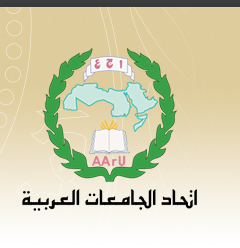Arab Journal of Administration المجلة العربية للإدارة
Abstract
This study aimed to clarify the types of policies and theories of the exchange rate and to clarify the impact of the exchange rate on the balance of the Jordanian payments and demonstrate the impact of exchange rate change on commercial Jordanian balance and clarify the relationship between the exchange and the exchange rate using several independent variables, namely, (the French franc and the pound sterling and the Japanese yen and the German mark) the dependent variable, a deficit in Jordan’s balance of trade volume. Using statistical analysis software (STATA) and ranged study period than a year (1990-2015). To achieve the objectives of the study to find out the impact of the trade deficit on the balance of payments, then analyzing the practical form (Empirical Model) that based on cross-sectional data (cross-sectional data), where it was performing the following statistical analyzes: Descriptive statistics (descriptive statistics), such as the arithmetic mean, standard deviation, maximum and minimum values, also included the percentages and duplicates variables phantom (variable placebo).Multiple regression analysis (multiple regression analysis), using ordinary least squares method (Ordinary Least Square (OLS)) in order to examine the impact of independent variables on dependent variable by test hypotheses that based on the study model. examination (F- test) to check the validity of the appropriate extent of the study data. Test (((VIF variance inflation factor) to examine the link between the variables of the study and disclose the problem of linear correlation (linear multiple), also inverted (VIF) to check the accuracy of the interpretation of the results level. Test (Breusch- Pagan test) to detect the problem of heterogeneity of error or residuum coefficient (heterogeneity) that may be included in the study data when testing the hypothesis, where they are to accept the premise if you do not distribute (CH2) any statistical significance. The study found several results were notably lower export volume of 1675 million dinars in (2003) to (2334) million dinars in (2004), a rate of 39.3% growth, while the re-exported goods which represents the balance of payments declined from (209.5) million dinars in (2003) to (466.2) million dinars in (2004). the balance of trade deficit in (2014) rose by (4.1%) by (6823.1) million dinars compared with the same period in (2013). the total percentage of the national total exports in the period of study was ranges from (11- 21.5%) of the trade balance,
Recommended Citation
Alrgaibat, Ghazi Abdulmajeed Dr and Alkhazali, Ahmad Salem Dr
(2018)
"The Impact of the Jordanian Dinar Exchange Rate with Foreign Currencies on the Jordanian Balance of Payments for the Period (1990 - 2015),"
Arab Journal of Administration المجلة العربية للإدارة: Vol. 38
:
No.
3
, Article 8.
Available at:
https://digitalcommons.aaru.edu.jo/aja/vol38/iss3/8

